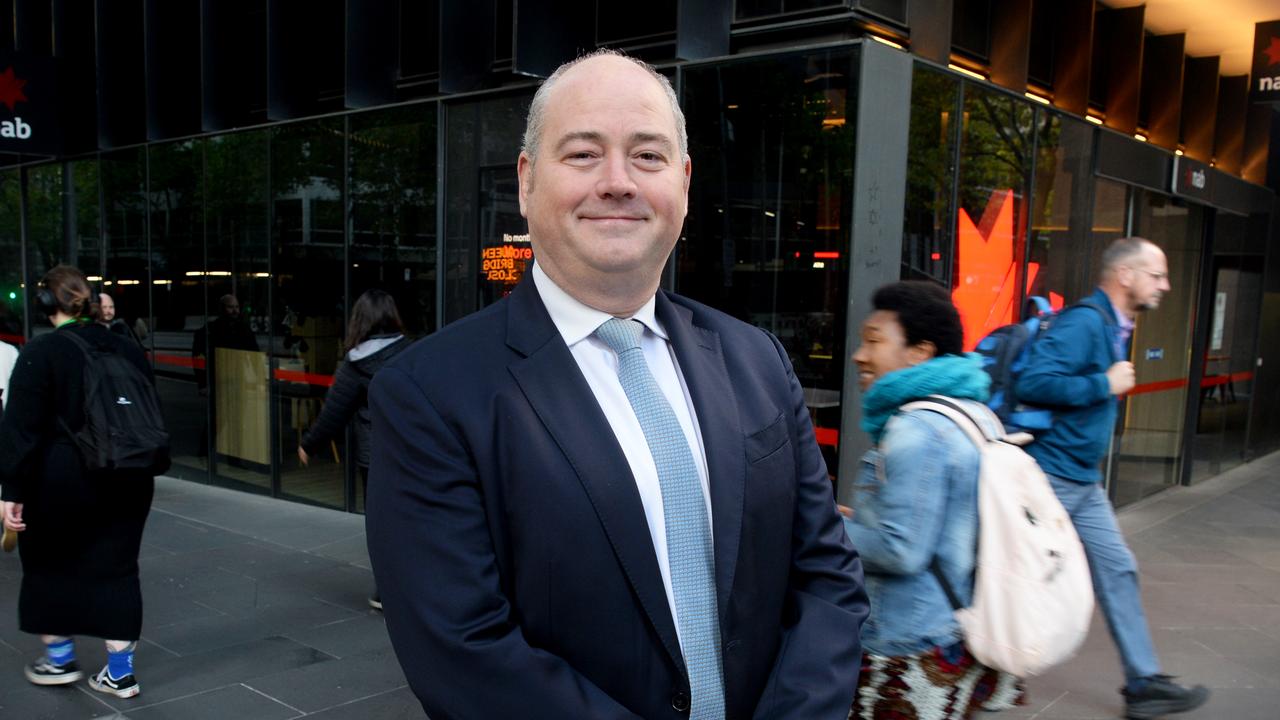ANZ cash profit surges as Covid risks recede; CEO Elliott calls for spending to continue
ANZ chief Shayne Elliott has urged the government to take advantage of ultra-cheap borrowing costs.

ANZ chief Shayne Elliott has urged the government to take advantage of ultra-cheap borrowing costs and not rein in stimulus too much in next week’s federal budget, even as the domestic economy fires up to almost boom time levels.
After handing down a more than doubling in ANZ’s first-half profit, Mr Elliott said given lingering risks from the pandemic it was too early for governments to focus heavily on paying down debt.
“Much like for many of our customers, borrowing has never been cheaper so from an affordability basis government debt has never been more affordable,” he told The Australian.
“To me that seems a bridge that’s worth crossing... I personally think we don’t need to get into too much detail about how it will get repaid at this point.”
Mr Elliott said directionally the government could provide a rough outline for paying down ballooning debt over coming years, but that was not a priority given that COVID-19 uncertainty persisted here and overseas.
“There is sense of a boom almost,” he added, of the current environment in many parts of the economy. The bank’s base case scenario anticipates economic output of 4.8 per cent this year and 3.3 per cent in 2022, and Mr Elliott expects the heat in the housing market - stoked by bumper demand - will moderate in 12 to 18 months.
“Demand, unless borders open, looks like it’s solid but unlikely to get another boost up and rates aren’t going to get any lower. But (housing) supply will respond,” he said.
Mr Elliott also expects a slow down in first homebuyer demand and in number of Australians expatriates returning home, and said the housing market would be impacted by zero immigration.
“Supply and demand suggest that 12 or 18 months out there will probably be a lull,” he added.
ANZ on Wednesday reported a more than doubling in first-half cash profit and a better-than-expected dividend, buoyed by its retail and commercial banking division and receding COVID-19 risks.
The result added to optimism in the sector, with ANZ’s cash net profit surging to $2.98bn for the six months ended March 31, up from $1.32bn in the year earlier period.
ANZ declared a first-half dividend of 70 cents per share, compared to an interim dividend of 25 cents per share in 2020. Last year’s dividend was deferred and impacted by regulatory guidance as COVID-19 turmoil gripped financial markets.
Analysts were expecting the ANZ result to print at $3.1bn and the dividend to come in at 62 cents per share.
ANZ released $491m in total loan provisions, reflecting expectations of fewer mortgage and loan losses stemming from the pandemic.
But the bank’s shares fell 3.2 per cent to $27.90 on Wednesday, outpacing a 0.5 per cent dip in the S&P/ASX200 Banks Index where it was the worst daily performer.

Credit Suisse analyst Jarrod Martin said while the ANZ dividend and capital position were positive, other factors would weigh on the shares.
“With only a reiteration of the previously announced cost aspiration and given expectations we see little in this result to further energise the market,” he added.
Matthew Davison, an analyst at fund manager Martin Currie Australia, labelled the key feature of ANZ’s result its loan book quality given the release of provisions.
“With the emergence of new problem loans low, the healthy balance of provisions and capital suggest we can expect this has further to run,” he said.
“A focus of the result was the near term cost outlook showing a need for reinvestment, but also ANZ’s target of absolute cost reduction by 2023. The magnitude of change contrasted with Westpac, but ANZ is starting from a much more efficient position and highlighted their track record of execution.”
The bank’s net interest margin - what it earns on loans minus funding and other costs - rose to 1.63 per cent in the first half, from 1.57 per cent six months earlier. That increase - the first in about a decade - was helped by more favourable funding and deposit pricing.
ANZ expects record low official interest rates will cause a one basis point drag on the margin in the latter half.
The bank’s net interest income dipped 3 per cent in the six months ended March 31, versus a year earlier, but other operating income including fees rose 6 per cent.
Mr Elliott admitted the bank had endured some processing issues in its home loan business, but was rectifying the problem by deploying more resources to the area.
ANZ’s expenses declined in the half as it continued to execute on plans to have a lower $8bn cost base by 2023.
Mr Elliott said in looking to achieve that cost base ANZ would also continue to invest, meaning in the second half expenses would edge up.
“This will not be a straight line,” he added, saying he didn’t want to damage the long-term prospects of the bank with overly aggressive cost cutting just to meet a target.
On a divisional basis, ANZ’s retail and commercial division saw a sharp increase in cash profit to almost $2.2bn in the first half, versus a year earlier and the prior half. The institutional arm saw profit rise on the prior corresponding period, but decline on the six months prior.
ANZ expects the strongest pipeline of mergers and acquisitions among large customers for about six years, and providing institutional services to other banks, will help lift performance in its institutional bank.
At a group level, ANZ’s return on equity printed at 9.7 per cent.
Mr Elliott said overall the bank was in a “strong position” financially and operationally given its five-year simplification plan, although COVID-19 uncertainty persisted.
“You only need to look at how the pandemic is playing out overseas, as well as recent lockdowns, to realise how quickly the situation can escalate.
“India, a country in which we have a deep history, is having a particularly difficult time.”
ANZ last week cautioned of a $817m hit to interim profit due to notable items including customer further compensation charges, and goodwill writedowns related to its share trading unit and the carrying value of an investment in Malaysia’s AmBank.
On Monday, rival Westpac more than trebled its half-year cash profit to $3.5bn.








To join the conversation, please log in. Don't have an account? Register
Join the conversation, you are commenting as Logout